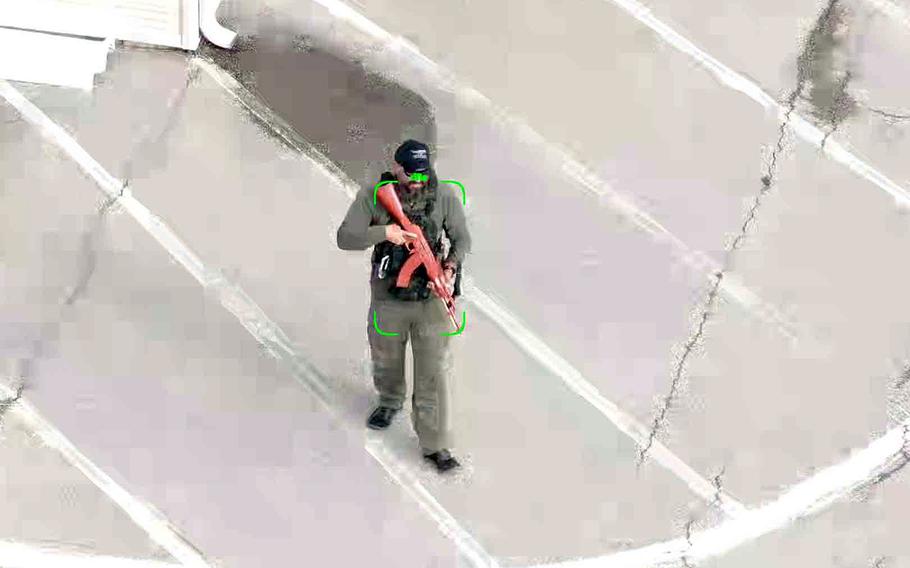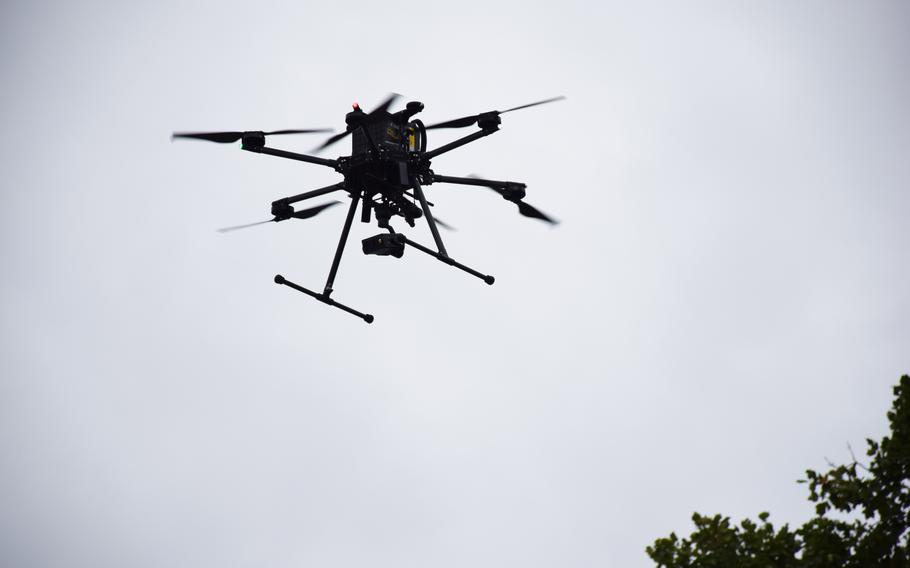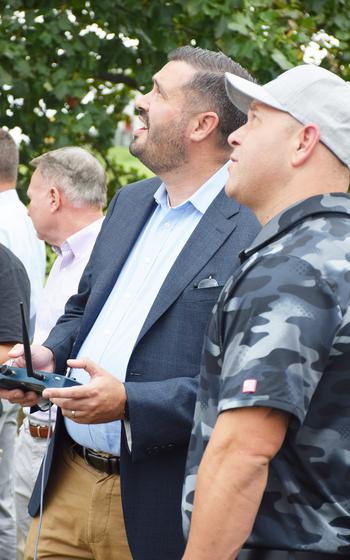
The artificial intelligence software Scylla correctly identifies an automatic rifle on a man wearing tactical attire at the Blue Grass Army Depot in Richmond, Ky., on Sept. 18, 2024. (Christopher Willoughby/U.S. Army)
An artificial intelligence tool that can almost instantly detect and analyze even distant security threats will be put through its paces by the Navy and Marine Corps next year, on the heels of Army testing in Kentucky.
Known as Scylla, the experimental software connects to surveillance cameras and turbocharges their monitoring potential, picking up on things imperceptible to the naked eye of a guard.
Water tests using the AI models produced by the Army effort are slated for the second quarter of next year at Joint Base Charleston in South Carolina, Defense Department spokesman Robert Ditchey said.
For the past several months, members of a Pentagon group dedicated to security technologies have been putting Scylla into action at the Blue Grass Army Depot in Richmond, Ky.
“If you’re the security operator, do you think you could watch 15 cameras at one time … and pick out a gun at 1,000 feet? Scylla can,” Chris Willoughby, the depot’s electronic security systems manager, said in an Army statement.
In a Sept. 18 demonstration led by the DOD’s Physical Security Enterprise and Analysis Group, Scylla spotted an intruder with a gun climbing a water tower a mile away and detected smoke coming from the bed of a pickup truck about 700 feet away.
When it was tested on a staged fight, Scylla immediately recognized the situation as a struggle and scanned a database for the faces of the two men.
”An on-duty military police officer is trying to subdue an intruder, a known bad actor with presumed hostile intent,” it warned.

A drone is used to get a closer look at pretend intruders at the Blue Grass Army Depot in Richmond, Ky., on Sept. 18, 2024. The depot is the only Defense Department installation that has tested the Scylla artificial intelligence software. Joint Base Charleston in South Carolina is slated to test the software next year. (Willliam D. Ritter/U.S. Army)
The tool uses facial recognition technology and does not send out alerts when it sees nonthreatening movements such as those of deer or tree branches.
Willoughby said the DOD standard for accuracy is 96% probability detection, local news outlet WKYT reported.
Even so, the possible pitfalls have raised questions about the potential for bias and Scylla’s reliability in distinguishing between weapons and innocuous objects.
Willoughby countered by saying this software is unlike the sort of generative AI technology most commonly envisioned, as with ChatGPT for instance.
“It basically looks at pixels on the screen,” he told local NPR affiliate WEKU. “When they move, the pixels change, and it sends you an alert. So it’s not truly artificial intelligence; it’s video-based analytics.”
The software makes surveillance cameras “smart” in much the same way a plug-in digital streaming stick enhances the content people can watch on their TV at home.
Scylla can also be installed on drones, according to WEKU. It was developed by the Blue Grass Army Depot, which is the only DOD site to have tested it so far, the Army statement said.
It was submitted to the service and the Physical Security Enterprise and Analysis Group, earning recognition as one of the top projects in fiscal year 2024, the statement said.

Drew Walter, left, deputy assistant secretary of defense for nuclear matters, alongside Chris Willoughby, the electronic security services manager for the Blue Grass Army Depot, says the AI tool Scylla could be crucial in protecting the U.S. nuclear arsenal. (Lori McFate/U.S. Army)
About 50 people were on hand for the September demonstration hosted by the facility. Among them was Drew Walter, a DOD official responsible for nuclear matters.
Scylla could be crucial in protecting the U.S. nuclear arsenal, Walter said in a Defense Department statement.
“The ability to detect and respond to threats swiftly is paramount when dealing with assets critical to deterrence, be they Trident missile submarines, intercontinental ballistic missiles or strategic bombers,” he said.
The software could also be used in schools to detect active shooters, a possibility of great interest to educators who attended the demonstration.
“You imagine picking up a gun 200 feet away off of a school, and automatically sending an alert to the cops immediately, and autonomously locking the doors all at the same time and letting everybody know what’s going on,” Willoughby told WEKU.